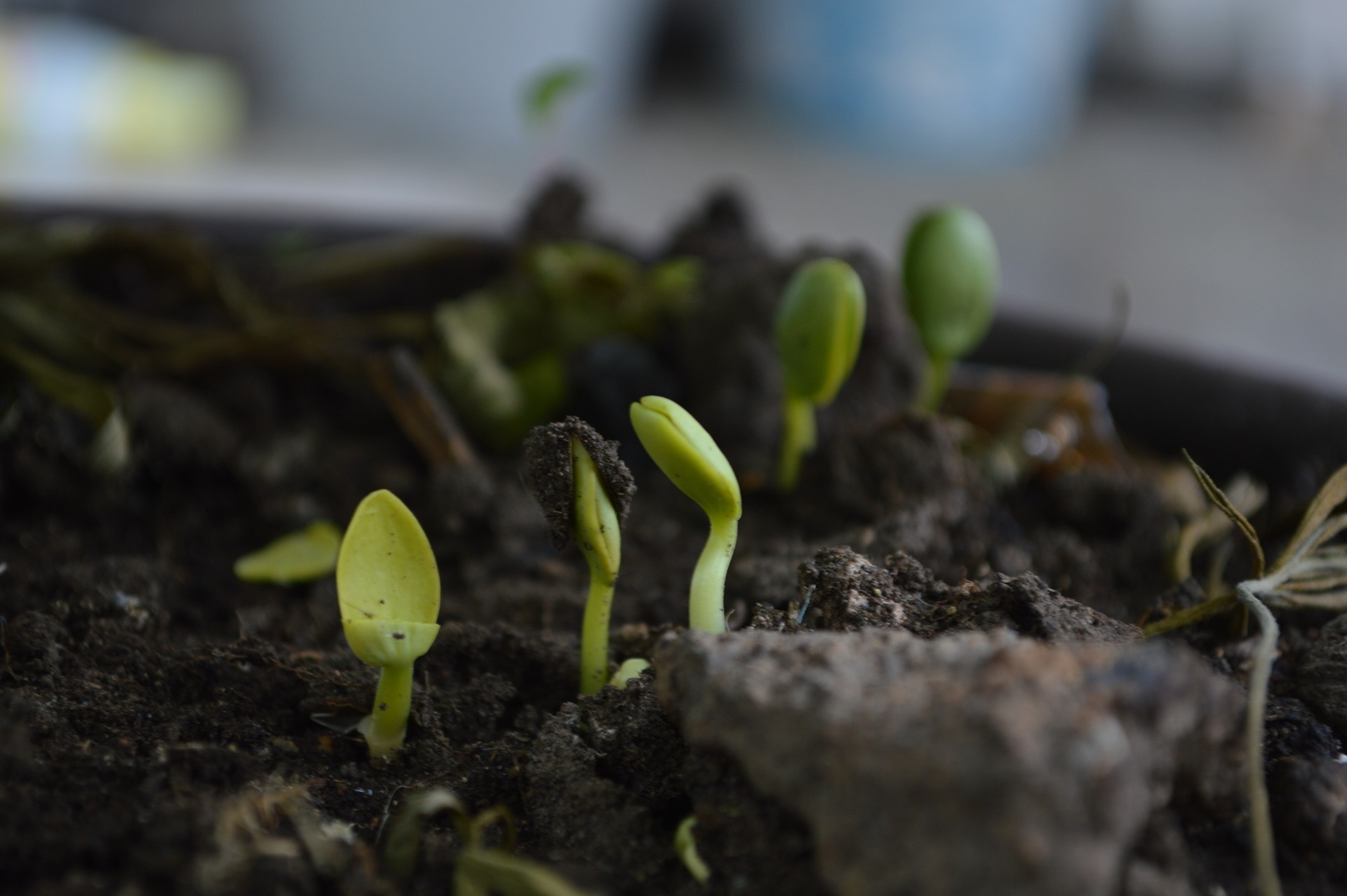Composting is an environmentally friendly way to recycle organic waste, turning it into nutrient-rich soil that can benefit your garden and reduce the amount of waste sent to landfills. This guide will walk you through everything you need to know about composting, from understanding the basics and choosing the right method to maintaining your compost pile and using the finished product.
Understanding Composting
Composting is the natural process of decomposition that transforms organic materials like food scraps, yard waste, and paper products into a dark, crumbly substance known as compost or humus. Microorganisms, such as bacteria and fungi, along with larger organisms like earthworms, break down the organic matter, releasing nutrients that plants can absorb.
Benefits of Composting
Reduces Waste
Composting significantly reduces the amount of organic waste that ends up in landfills, thereby decreasing methane emissions, a potent greenhouse gas produced by decomposing waste in anaerobic conditions.
Improves Soil Health
Compost enriches soil by improving its structure, moisture retention, and nutrient content. It provides essential nutrients for plants and fosters beneficial microorganisms.
Saves Money
Using compost reduces the need for chemical fertilizers, saving you money and promoting a healthier garden ecosystem.
Reduces Pollution
Composting helps reduce the pollution associated with waste disposal and the use of synthetic fertilizers, leading to cleaner water and air.
Choosing a Composting Method
Backyard Composting
Ideal for those with outdoor space, backyard composting involves creating a compost pile or using a compost bin. It’s suitable for garden waste, kitchen scraps, and some paper products.
Vermicomposting
Vermicomposting uses worms, typically red wigglers, to break down organic material. It’s a great option for those with limited outdoor space or who want to compost indoors.
Bokashi Composting
This method involves fermenting kitchen waste using a special bran inoculated with beneficial microbes. It’s suitable for small spaces and can handle meat and dairy, which traditional composting cannot.
Trench Composting
A simple method that involves burying organic waste directly in the soil. It’s ideal for gardeners looking for a low-maintenance composting option.
Selecting a Compost Bin
Compost Piles
Compost piles are a traditional and straightforward method. They require ample outdoor space and are best for those who produce a large volume of organic waste.
Compost Bins
Bins offer a more contained and neater solution. They come in various styles, including stationary bins, tumblers, and DIY options.
Vermicomposting Bins
These bins are designed to house worms and maintain the conditions necessary for vermicomposting. They can be kept indoors or outdoors.
Bokashi Bins
Specialized bins for bokashi composting, which are airtight and designed to ferment kitchen waste.
Starting Your Compost Pile
Choosing a Location
Select a location for your compost pile or bin that is easily accessible, has good drainage, and receives partial sunlight. Avoid placing it too close to your house to prevent any potential odors from becoming a nuisance.
Gathering Materials
Start with a mix of green and brown materials. Green materials include kitchen scraps, grass clippings, and coffee grounds, which provide nitrogen. Brown materials include leaves, straw, and cardboard, which provide carbon.
Layering and Aeration
Layering green and brown materials helps balance the carbon-to-nitrogen ratio, which is crucial for efficient decomposition. Regularly turning the pile introduces oxygen, which is necessary for aerobic decomposition.
Adding Water
Keep the compost pile moist but not waterlogged. The consistency should be similar to a damp sponge. Too much water can lead to anaerobic conditions and unpleasant odors.
Maintaining Your Compost Pile
Turning the Pile
Regularly turning your compost pile, about once a week, helps aerate it and speeds up the decomposition process. Use a garden fork or shovel to mix the materials.
Monitoring Moisture
Check the moisture level regularly and add water if it becomes too dry or cover it if it becomes too wet. Proper moisture levels are essential for microbial activity.
Controlling Pests
Properly maintaining your compost pile can prevent pests. Avoid adding meat, dairy, and oily foods, and cover food scraps with a layer of brown materials to reduce odors.
Troubleshooting Common Issues
Odor Problems
Foul odors usually indicate anaerobic conditions. Turn the pile more frequently and add dry materials to absorb excess moisture.
Slow Decomposition
If your compost isn’t breaking down, it may lack nitrogen or moisture. Add more green materials or water as needed.
Pests and Rodents
If pests become a problem, ensure you’re not adding attractants like meat or dairy. Use a bin with a secure lid and consider lining the bottom with wire mesh.
Using Finished Compost
Identifying Finished Compost
Finished compost is dark, crumbly, and earthy-smelling. It should no longer resemble the original materials.
Applying Compost to Your Garden
Use compost as a soil amendment by mixing it into garden beds, or as a mulch around plants to retain moisture and suppress weeds. It can also be used in potting mixes for container gardening.
Storing Compost
If you produce more compost than you can use immediately, store it in a covered bin or pile to keep it dry and prevent nutrient loss.
Benefits of Composting in Different Settings
Urban Composting
Urban composting can be challenging due to limited space, but methods like vermicomposting and bokashi are well-suited for apartments and small homes.
Suburban Composting
Suburban settings often have more space for backyard composting. Larger compost bins or piles can handle garden waste and kitchen scraps efficiently.
Rural Composting
Rural composting typically involves larger volumes of organic waste. All composting methods are viable, with plenty of space for multiple compost piles or bins.
Educational and Community Composting
Schools and community gardens can benefit from composting by reducing waste and creating nutrient-rich soil for gardens. Educational programs can teach the importance of composting and sustainability.
Advanced Composting Techniques
Hot Composting
Hot composting involves maintaining high temperatures (130-160°F) in the compost pile to speed up decomposition and kill pathogens. This method requires frequent turning and monitoring.
Composting Large Volumes
For those with large amounts of organic waste, such as farms or community gardens, consider using large-scale composting systems like windrows, aerated static piles, or in-vessel composting.
Making Compost Tea
Compost tea is a nutrient-rich liquid made by steeping finished compost in water. It can be used as a foliar spray or soil drench to promote plant growth.
Special Considerations for Composting
Composting in Cold Climates
In cold climates, decomposition slows down. Insulate your compost pile with straw or leaves, or consider using a compost tumbler that can be moved to a warmer location.
Composting in Hot Climates
In hot climates, compost piles can dry out quickly. Keep the pile shaded, add water regularly, and consider covering it with a tarp to retain moisture.
Composting with Limited Space
For those with limited space, vermicomposting, bokashi, or small-scale indoor compost bins are effective options. These methods can be used in apartments or homes without yards.
Legal and Regulatory Considerations
Check local regulations regarding composting, especially in urban areas. Some municipalities have guidelines on compost pile size, placement, and acceptable materials.
Environmental Impact of Composting
Reducing Greenhouse Gas Emissions
Composting reduces methane emissions from landfills and lowers the carbon footprint associated with waste disposal.
Enhancing Soil Carbon Sequestration
Compost improves soil structure and increases its ability to sequester carbon, helping mitigate climate change.
Promoting Sustainable Agriculture
Compost enriches soil fertility and reduces the need for chemical fertilizers, promoting sustainable and organic farming practices.
Composting and Biodiversity
Composting supports biodiversity by creating habitats for beneficial microorganisms and insects, which contribute to a healthy ecosystem.
Educational Resources and Further Reading
Books and Guides
Many books and guides provide detailed information on composting techniques, troubleshooting, and benefits. Consider titles like “The Rodale Book of Composting” and “Let It Rot!”
Online Courses and Workshops
Numerous online courses and workshops are available for those looking to deepen their knowledge of composting. Websites like Coursera, Udemy, and local agricultural extensions offer valuable resources.
Community Programs and Support
Join local composting programs or community gardens to share knowledge, resources, and support. These programs often offer workshops and composting facilities.
FAQs about Composting
What is composting?
Composting is the process of decomposing organic materials, such as kitchen scraps and yard waste, into a nutrient-rich soil amendment known as compost.
Why should I compost?
Composting reduces waste in landfills, decreases methane emissions, improves soil health, saves money on fertilizers, and promotes sustainable gardening.
What can I compost?
You can compost fruit and vegetable scraps, coffee grounds, eggshells, grass clippings, leaves, shredded paper, cardboard, and plant trimmings.
What should I avoid composting?
Avoid composting meat, dairy products, oils, fats, pet waste, diseased plants, and invasive weeds.
How long does composting take?
The composting process can take anywhere from a few months to over a year, depending on factors like material balance, moisture, aeration, and temperature.
What is the difference between green and brown materials?
Green materials are rich in nitrogen and include items like vegetable scraps and grass clippings. Brown materials are high in carbon and include leaves, straw, and cardboard.
How do I balance green and brown materials?
A good rule of thumb is to use a ratio of three parts brown materials to one part green materials to maintain a balanced compost pile.
Why does my compost pile smell bad?
A foul odor typically indicates anaerobic conditions. Ensure proper aeration by turning the pile regularly and adding more brown materials to absorb excess moisture.
How often should I turn my compost pile?
Turning the compost pile every one to two weeks helps aerate it and speeds up the decomposition process.
Can I compost in the winter?
Yes, you can compost in the winter. Insulate your compost pile with straw or leaves to maintain heat, or use a compost tumbler that can be moved to a warmer location.
What is vermicomposting?
Vermicomposting is a method of composting using worms, typically red wigglers, to break down organic material into nutrient-rich worm castings.
How do I start vermicomposting?
Set up a worm bin with bedding material, add worms, and start feeding them small amounts of kitchen scraps. Maintain proper moisture and avoid overfeeding.
What is bokashi composting?
Bokashi composting is an anaerobic fermentation process that uses a special bran inoculated with beneficial microbes to break down kitchen waste, including meat and dairy.
Can I compost meat and dairy?
Meat and dairy are not recommended for traditional composting due to their potential to attract pests and create odors, but they can be composted using the bokashi method.
What is a compost tumbler?
A compost tumbler is a bin that can be rotated to mix and aerate the compost materials, making the composting process faster and easier.
How do I know when my compost is ready?
Finished compost is dark, crumbly, and earthy-smelling. It should no longer resemble the original materials.
Can I compost weeds?
You can compost weeds, but avoid adding invasive species or weeds that have gone to seed to prevent them from spreading in your garden.
What is hot composting?
Hot composting involves maintaining high temperatures (130-160°F) in the compost pile to speed up decomposition and kill pathogens and weed seeds.
How do I start a hot compost pile?
To start a hot compost pile, build a large pile (at least 3x3x3 feet) with a balanced mix of green and brown materials, and turn it regularly to maintain high temperatures.
Can I compost pet waste?
Pet waste from herbivores, like rabbits, can be composted, but waste from carnivorous pets, like dogs and cats, should be avoided due to potential pathogens.
What is compost tea?
Compost tea is a nutrient-rich liquid made by steeping finished compost in water. It can be used as a foliar spray or soil drench to promote plant growth.
How do I make compost tea?
To make compost tea, steep a bag of finished compost in water for 24-48 hours, stirring occasionally. Strain the liquid and use it immediately on plants.
Can I compost cooked food?
Avoid composting cooked food in traditional composting as it can attract pests. Cooked vegetables can be composted using the bokashi method.
What is trench composting?
Trench composting involves burying organic waste directly in the soil. It is a low-maintenance method that slowly decomposes waste and enriches the soil.
How do I start trench composting?
Dig a trench or hole in your garden, fill it with organic waste, and cover it with soil. Wait a few months for the waste to decompose before planting in the area.
Can I compost paper and cardboard?
Yes, you can compost paper and cardboard as long as they are shredded and free of plastic coatings or heavy inks.
How do I prevent pests in my compost?
Prevent pests by avoiding meat, dairy, and oily foods, covering food scraps with brown materials, and using a bin with a secure lid.
How do I keep my compost moist?
Maintain moisture by adding water if the pile is too dry or covering it if it’s too wet. The compost should be as damp as a wrung-out sponge.
Can I compost grass clippings?
Yes, grass clippings are an excellent green material for composting. Avoid adding large amounts at once to prevent matting and odors.
What is aerated static pile composting?
Aerated static pile composting involves using a system of pipes to supply air to the compost pile, eliminating the need for turning.
How do I start aerated static pile composting?
Build a pile over a network of perforated pipes connected to a blower or a natural ventilation system. Maintain a balanced mix of green and brown materials.
Can I use compost in my potting mix?
Yes, you can use compost in your potting mix. Mix it with other components like peat, perlite, or vermiculite to create a balanced potting soil.
How do I store finished compost?
Store finished compost in a covered bin or pile to keep it dry and prevent nutrient loss until you’re ready to use it.
Can I compost in a small apartment?
Yes, you can compost in a small apartment using methods like vermicomposting or bokashi composting, which are suitable for indoor use.
What is green manure?
Green manure involves growing plants specifically to be tilled back into the soil, adding organic matter and nutrients as they decompose.
How do I use green manure in composting?
Grow green manure crops, then cut and add them to your compost pile as green material or till them directly into your garden soil.
Can I compost in a desert climate?
Composting in a desert climate requires extra attention to moisture. Keep the pile shaded, add water regularly, and cover it to retain moisture.
What is in-vessel composting?
In-vessel composting involves composting organic waste in a contained environment, such as a drum or silo, allowing for controlled conditions and faster decomposition.
How do I start in-vessel composting?
Invest in an in-vessel composting system, add organic waste, and follow the manufacturer’s instructions for maintaining and operating the system.
Can I compost pine needles?
Pine needles can be composted, but they decompose slowly. Shred them and mix with other brown materials to speed up the process.
What is leaf mold?
Leaf mold is decomposed leaves that create a rich, crumbly soil amendment, excellent for improving soil structure and water retention.
How do I make leaf mold?
Collect leaves, moisten them, and pile them in a shaded area. Turn the pile occasionally, and after a year or two, you’ll have leaf mold.
Can I compost citrus peels?
Yes, you can compost citrus peels. They may take longer to decompose, so chopping them into smaller pieces can help speed up the process.
How do I use compost in my garden?
Use compost as a soil amendment by mixing it into garden beds, as mulch around plants, or as an ingredient in potting mixes.
What is compost activator?
A compost activator is a product or material that speeds up the composting process by adding beneficial microorganisms or nutrients.
How do I use compost activators?
Follow the instructions on the compost activator product, or use natural activators like green grass clippings, coffee grounds, or manure.
Can I compost in my kitchen?
Yes, you can compost in your kitchen using a countertop compost bin for temporary storage before transferring to an outdoor bin, or using a small vermicomposting or bokashi system.
How does composting benefit the environment?
Composting reduces waste in landfills, lowers greenhouse gas emissions, enriches soil, and reduces the need for chemical fertilizers, promoting a healthier ecosystem.
Conclusion
Composting is a rewarding and environmentally friendly way to manage organic waste. By following the steps outlined in this guide, you can start composting effectively and enjoy the many benefits it brings to your garden and the environment. Whether you choose backyard composting, vermicomposting, or another method, the key is to find a system that works for you and stick with it.



